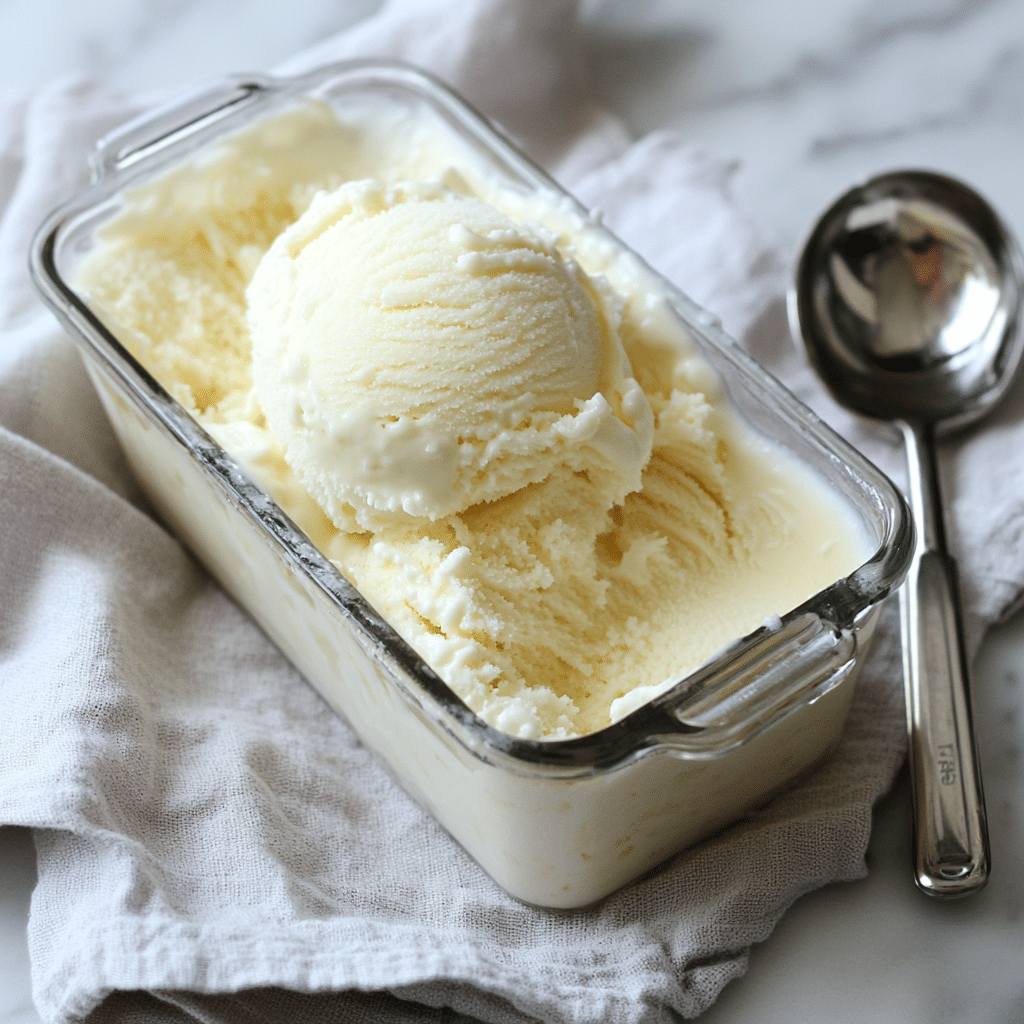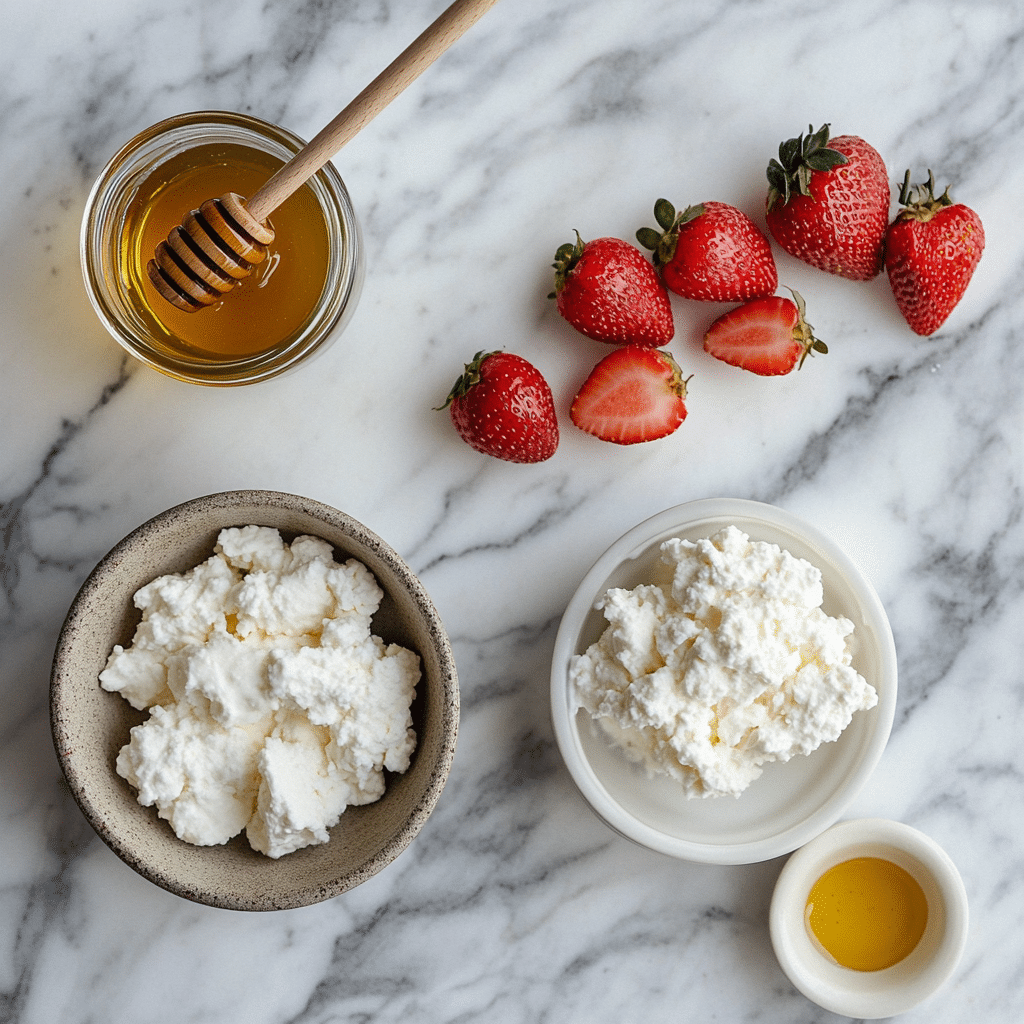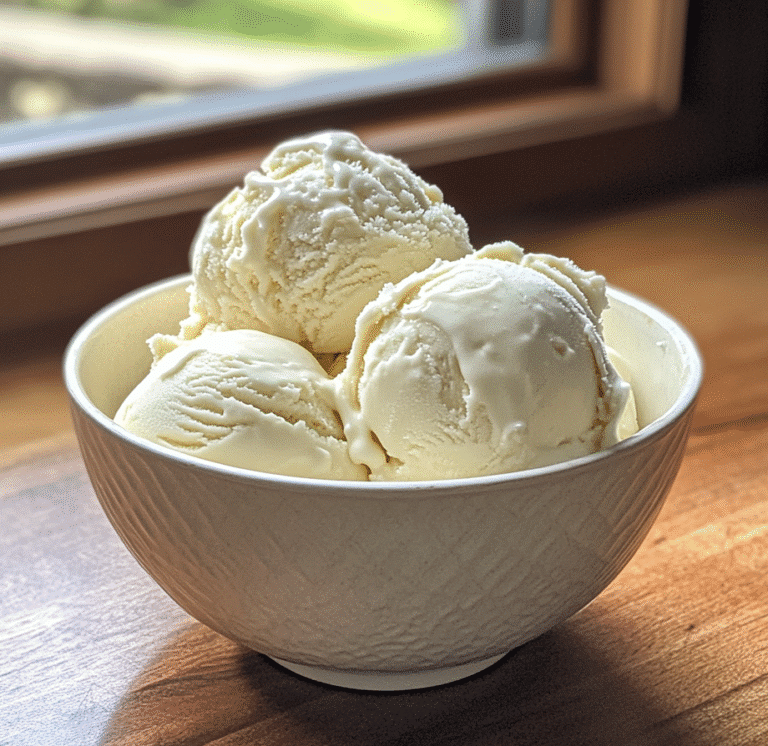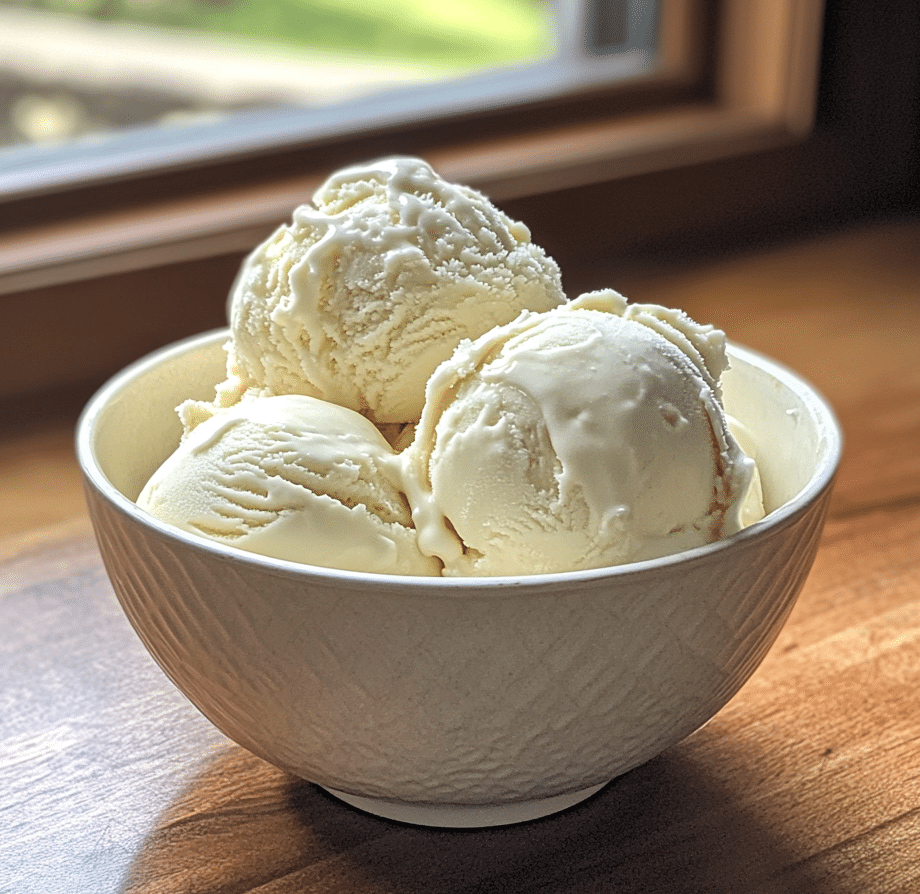Introduction
In this article, you’ll explore the rise of cottage cheese ice cream—a high-protein, low-sugar alternative to regular ice cream that’s taken social media by storm. We’ll dive into why it works, how to make it creamy and satisfying, and answer key FAQs. Plus, I’ll share tips drawn from top-ranking sources on customization, freezing techniques, and serving ideas. Whether you’re curious about the health benefits, texture, or flavor, this guide covers everything you need to scoop with confidence.
A Creamy Comeback – Cottage Cheese Ice Cream Takes the Stage
I remember the first time I spotted cottage cheese ice cream in my feed someone blended cottage cheese with honey and frozen strawberries, and whipped up this dreamy, protein-packed dessert in minutes. It felt nostalgic, like hanging at my grandma’s kitchen counter, spoon dipping into a bowl of homemade custard. The idea of turning cottage cheese into ice cream seemed unlikely but within seconds of blending, the curds disappeared and the mixture looked like soft-serve magic.
Why cottage cheese?
Cottage cheese is naturally high in protein and low in saturated fat, with about 11–12 g of protein per 100 g and only 80–100 calories . When you blend it, it transforms from chunky curds into a smooth, creamy baseperfect for freezing into dessert. That shift explained why dietitians describe it as a nutritious, guilt-free indulgence .
The viral appeal
It all started on TikTok and Instagram. Recipe creators like Feel Good Foodie and Eating Well simplified the process just cottage cheese, honey or maple syrup, blend and freeze . Thousands of users followed, sharing variations: peanut butter chocolate-chip, banana cream, strawberry cheesecake each with that protein-packed punch (20–23 g per cup) .
Health meets convenience
This isn’t just a gimmick. Registered dietitians note that blended cottage cheese delivers essential nutrients like calcium, B12, and casein protein, supporting bone health and muscle recovery. Compared to traditional ice cream, it’s lower in calories and fat yet still sweet and satisfying. Think of it as dessert that doubles as a snack.
Why Blend Cottage Cheese for Ice Cream?

Let’s talk about where the real magic happens in cottage cheese ice cream blending. It’s what turns those soft, bouncy curds into a creamy, dreamy base that mimics the smooth texture of traditional ice cream. Without blending, cottage cheese keeps its signature lumps. But the moment you whip it up in a high-powered blender with honey, maple syrup, or even fruit, it changes completely into a spoonable, scoopable, satisfying base you’d never guess started out as cheese.
Protein punch meets creaminess
One of the standout qualities of cottage cheese is its protein content. Just one cup contains roughly 23 to 25 grams of protein. That’s as much as a serving of chicken breast or a big bowl of Greek yogurt. For anyone trying to get more protein into their diet whether you’re lifting weights, chasing kids, or just trying to snack smarter this is a big deal.
Unlike traditional ice cream, which is often loaded with sugar and low in protein, this version helps you feel full longer. It also delivers casein protein, a slow-digesting variety that supports muscle recovery over time. That makes cottage cheese ice cream more than a treat it’s fuel.
Fewer calories, less fat, no guilt
Here’s the beautiful part: blending cottage cheese with a bit of natural sweetener gives you all the flavor of a creamy dessert without all the heaviness. Most recipes use full-fat or whole-milk cottage cheese, which is usually around 4% milkfat. That provides just enough richness to be indulgent without tipping into overload.
You don’t need heavy cream, egg yolks, or cups of sugar. A tablespoon or two of honey or maple syrup goes a long way, especially when you pair it with the natural sweetness of fruit. You get that full, cold, creamy dessert experience but with far fewer calories and a nutrition label that’s actually worth reading.
Texture tricks and tips
One thing to know: cottage cheese contains more moisture and less fat than classic ice cream bases. That means if you just blend it and leave it in the freezer overnight, it might get icy. But there are a few simple ways to fix that.
Start by freezing the mixture in a shallow, sealed container. Stir it every 30 to 60 minutes during the first two hours. This breaks up ice crystals and keeps the texture smooth. If you want to go a step further, you can use an ice cream maker for extra creaminess.
Another tip? Let it sit out for five to ten minutes before scooping. This softens it just enough to mimic traditional churned ice cream. And if you want the creamiest base possible, choose a higher-fat cottage cheese. That little bit of extra richness goes a long way in making every bite silky, smooth, and scoopable.
Simple Ingredients, Endless Flavor Variations

One of the best things about cottage cheese ice cream is how flexible it is. With just a few simple pantry staples, you can whip up endless flavor variations to satisfy any craving.
Basic ingredients you need
To start, gather these essentials:
- Whole‑milk cottage cheese (1 to 2 cups)
- Natural sweetener (honey, maple syrup, or dates)
- Flavor booster (vanilla, cocoa powder, or citrus zest)
- Optional add‑ins (frozen berries, peanut butter, or dark chocolate chips)
These pantry basics make it easy to improvise. I often refer to my oatmeal bowls when deciding sweeteners and fruits consistency makes life easier in the kitchen.
Creative flavor twists
Once you’ve got the base down, the sky’s the limit:
| Flavor | Ingredients |
|---|---|
| Strawberry Cheesecake | Cottage cheese, frozen strawberries, graham cereal crumbs, vanilla extract |
| Chocolate Peanut Butter | Cocoa powder, natural peanut butter, a dash of cinnamon |
| Matcha Green Tea | Matcha powder, honey, splash of almond milk |
| Tropical Mango | Frozen mango, lime zest, coconut flakes |
Trying vegan or dairy-free?
Wondering if you can make a dairy-free version of cottage cheese ice cream? While it won’t be quite the same nutritionally, there are great plant-based alternatives. Coconut cream or almond milk yogurt can provide a creamy base that mimics the texture of blended cottage cheese. They won’t pack the same protein punch, but they do offer a satisfying texture and are perfect for those avoiding dairy. Add your favorite sweetener, blend with fruit or spices, and you’ve got a scoopable, chilled treat that still feels indulgent.
Pro tips for flavor
- Use frozen fruit to improve texture and lock in flavor.
- Always start with a neutral-flavored sweetener and adjust.
- Taste-and-blend in stages—sweetness, then tang or richness.
- Stir in mix-ins after initial freeze so they don’t all sink.
Tricks for the Perfect Scoop and Storage Tips
Getting that perfect scoop and keeping your cottage cheese ice cream creamy over time is easy with a few smart tweaks.
Achieving scoopable texture
Since cottage cheese ice cream has lower fat and more water than regular ice cream, it naturally gets firm in the freezer. To get a creamy scoopable result:
- Freeze in a shallow, airtight container to speed up chilling.
- Stir every 30 minutes for the first 1–2 hours to break up ice crystals.
- For ultra-smooth texture, pulse it again in the blender just before serving.
These steps mimic small-batch churners without the gadgetry. And for the fluffiest finish, let it sit at room temperature for 5–10 minutes before scooping.
Storage hacks to maintain flavor
To preserve flavor and texture:
- Press plastic wrap directly onto the surface before sealing to prevent freezer burn.
- Freeze in individual silicone molds or muffin tins for easy portion control.
- If the mixture hardens solid, thaw in the fridge for 20–30 minutes, then stir or re-blend before scooping.
- Label containers with the date; most versions stay great for up to 2 weeks in the freezer
Conclusion
Cottage cheese ice cream proves that healthy and indulgent can coexist. With its high protein, low sugar, and customizable base, it’s a smart treat for anyone who loves flavor without compromise. From simple vanilla to inventive matcha or chocolate-peanut butter blends, you can make this trend your own. Scoop it, store it, and share—it’s dessert that does more than satisfy your sweet tooth.
for more recipes follow our facebook page
FAQs
Can you turn cottage cheese into ice cream?
Absolutely blending cottage cheese with a sweetener and optional flavorings, then freezing, yields a creamy, protein-rich treat that resembles soft-serve.
Does cottage cheese ice cream freeze solid?
It can if left too long, since it has more water and less fat than traditional ice cream. To avoid iciness, stir during early freezing or let it soften before serving.
Can you turn cottage cheese into heavy cream?
Not exactly heavy cream holds around 36% fat, which cottage cheese lacks. However, blending more-fatty cottage cheese or mixing it with dairy can approximate creaminess in sauces or soups.
Can cottage cheese be used to make a creamy sauce?
Yes! Puréed cottage cheese creates silky, rich sauces perfect for pasta, vegetables, or casseroles just blend with seasoning, a little liquid, and heat gently.

Cottage Cheese Ice Cream: Healthy, High‑Protein Indulgence
This cottage cheese ice cream is a game-changer for healthy dessert lovers. It’s rich in protein, low in sugar, and easy to customize with your favorite mix-ins and flavors. With a creamy texture and no need for an ice cream maker, it’s a perfect no-churn treat you’ll crave again and again.
- Total Time: 1 hour 10 mins
- Yield: 4 servings 1x
Ingredients
1 cup whole-milk cottage cheese
2 tablespoons honey or maple syrup
1/2 cup frozen strawberries or other frozen fruit
1 teaspoon vanilla extract
Optional: 2 tablespoons mix-ins (e.g., peanut butter, dark chocolate chips, graham cracker crumbs)
Instructions
1. Place cottage cheese, sweetener, frozen fruit, and vanilla in a high-speed blender.
2. Blend on high until the mixture becomes silky smooth, about 30–60 seconds.
3. Taste and adjust sweetness or texture as needed.
4. Transfer the mixture to a shallow freezer-safe container.
5. Freeze for 1–2 hours, stirring every 30 minutes to maintain a soft texture.
6. Let soften for 5–10 minutes before scooping.
7. Serve in bowls or cones and top with your favorite toppings.
Notes
For best texture, use full-fat cottage cheese.
If freezing longer than 2 hours, allow it to sit at room temperature to soften before scooping.
Add-ins like chocolate chips or cookie crumbles work best if stirred in after the first freeze.
For a dairy-free variation, try using blended silken tofu or plant-based yogurt.
- Prep Time: 10 mins
- Cook Time: 0 mins
- Category: Dessert
- Method: No-churn
- Cuisine: American
- Diet: Vegetarian
Nutrition
- Serving Size: 1/2 cup
- Calories: 120
- Sugar: 10g
- Sodium: 85mg
- Fat: 4g
- Saturated Fat: 1g
- Unsaturated Fat: 2g
- Trans Fat: 0g
- Carbohydrates: 15g
- Fiber: 1g
- Protein: 12g
- Cholesterol: 10mg
